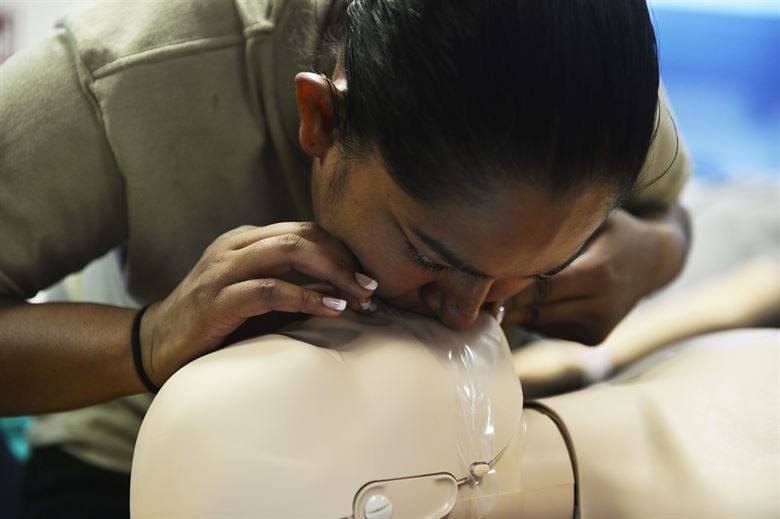
Two thirds of Londoners who had cardiac arrest last year were given CPR by a member of the public, it was revealed.
Londoners have administered crucial heart resuscitation on nearly 2,500 people in the capital in the last year, an audit by London Ambulance Service (LAS) revealed.
The highest rate of CPR by members of the public was recorded in Redbridge, east London at 81 per cent.
There were only 80 cases where a shock from a difibrillator was used by the public, but it saved the lives of 40 people, five times the normal rate of survival.
Despite traffic, paramedics typically reach patients within seven minutes and London has one of the best survival rates in the world.
But the LAS praised Londoners who have helped to keep patients alive before the ambulance arrives.
Chances of surviving a cardiac arrest, when the heart stops, drop ten per cent by the minute.
LAS Medical director Dr Fenella Wrigley said: “Londoners are doing a fantastic job providing initial care for cardiac arrest patients.
“When someone’s heart stops, members of the public can really make a difference before an ambulance arrives.
“The chances of survival drop by about ten per cent with every minute that passes so it is important to start chest compressions straight away and use a defibrillator where one is available.”
Arrest occur when the heart stops and early intervention gives victims the best chance of survival.
Chest compressions help to keep blood pumping to the brain, while an early shock from a defibrillator will restore normal heart rhythm.
LAS has increased the number of public access defibrillators to nearly 5,000 which are now available in train stations, gyms, parks and shops.
But according to the service’s cardiac arrest annual report, there were little more than 100 cases when a member of public used the device.
Shocks were given to almost 80 patients and half of those survived five times more than might have survived otherwise.
Dr Wrigley added: “These defibrillators are designed to be easy to use.
“You don’t need medical training but learning how to use one in advance will give you more confidence to respond quickly and it could make a difference to so many lives.
“We would urge everyone to learn basic life support which is a life-saving skill and if you see someone who needs you, stop and help.
“Ringing 999 will get early help on the way to the patient and the ambulance service can advise if there is a public access defibrillator nearby.”
The report looked at the 12 months to March and found men were more likely to have a cardiac arrest.
Almost 65 per cent of their patients were male, with an average age of 62 years while those remaining were women, with an average age of 68 years.
The average age of patients was lowest in Tower Hamlets at 58 years and highest in the boroughs of Redbridge, Bexley in south east London and Richmond, west London – at 71 years.
Cardiac arrest patients in central London had the best outcome – with more than 18 per cent surviving.